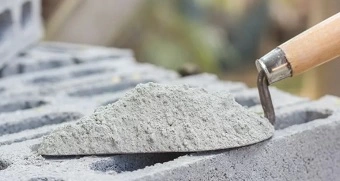Paving Progress: The Surge of Iraq's Cement Industry in a Rebuilding Nation
07 Nov 2024 • by Natalie Aster

The cement industry in Iraq is undergoing a period of rapid transformation, driven by both domestic demand and regional shifts. Iraq’s growing population and its ambitious reconstruction efforts are placing high demands on the construction sector, with cement as a core material in this landscape. This market presents both challenges and opportunities, as demand surges and investments flow into the country.
The Demand Surge: Population Growth & Urbanization
Iraq’s cement market is heavily influenced by its demographic profile. With a population growth rate exceeding 2.5% annually, the demand for residential and commercial spaces continues to escalate. This rapid urbanization is evident in cities like Baghdad, Basra, and Erbil, where infrastructure development is underway to accommodate the expanding population. Cement remains a foundational material, essential in building homes, roads, and commercial spaces, fueling continuous demand. The increase in demand has compelled Iraqi cement manufacturers to boost production capacities, often leading to collaborations with international partners for technology transfer and improved production processes.
Infrastructure Reconstruction & Investment Initiatives
Rebuilding Iraq’s infrastructure post-conflict is a priority, which directly impacts the cement industry. Government and international organizations are heavily investing in infrastructure projects, including highways, bridges, ports, and energy facilities. These projects are cement-intensive and contribute significantly to the market's growth trajectory. Massive investment is funneled into rebuilding and expanding the road network to improve connectivity across cities. Furthermore, Iraq's energy infrastructure is a key area for development, requiring substantial cement usage for new plants and grid modernization. Besides, hospitals, schools, and government buildings form a crucial part of infrastructure reconstruction. The funding from entities like the World Bank and partnerships with regional construction giants has resulted in large-scale infrastructure projects, which are creating stable, long-term demand for cement.
Supply Chain Dynamics: Import Dependency & Local Production
The Iraqi cement market has traditionally relied on imports to meet demand; however, local production is gaining traction. Domestic production has been improving due to investments in plant capacity, technology upgrades, and efficiency-enhancing practices. However, supply chain issues, such as fluctuating raw material prices and logistical constraints, still pose challenges.
The government's focus on building local production capacity is crucial in stabilizing the supply chain. Collaborations with international suppliers and improvements in port facilities are critical steps toward securing a more reliable supply chain for cement in Iraq.
Government Regulations & Environmental Standards
Iraq’s government plays a pivotal role in shaping the cement market, not only through demand from public sector projects but also by setting industry standards and regulations. The government enforces standards to ensure cement quality, which boosts confidence in local products and supports import substitution. To support domestic production, the government offers incentives such as tax breaks and subsidies on raw materials.
Environmental concerns are prompting stricter guidelines on cement production emissions, compelling manufacturers to adopt cleaner technologies. There is a growing emphasis on reducing carbon emissions in cement production. Modern plants are incorporating energy-efficient technology to meet these standards.
By encouraging sustainable production practices, the government not only aims to protect the environment but also aligns Iraq’s cement market with global trends. This approach is essential for attracting foreign investments and ensuring long-term competitiveness.
Technological Advancements & Efficiency Improvements
Iraq’s cement industry is increasingly focusing on technological advancements to enhance production efficiency and reduce costs. The integration of modern machinery, automated production lines, and data-driven monitoring systems is transforming the landscape. Advanced machinery with lower energy consumption is helping plants minimize their environmental impact and control production costs. Real-time data monitoring systems enable proactive maintenance, preventing costly shutdowns and ensuring consistent output.
These technological improvements not only align with the environmental objectives but also make Iraq’s cement industry more resilient and cost-competitive, crucial for market sustainability and profitability.
Economic & Political Stability as Market Catalysts
The cement industry’s growth is closely tied to Iraq’s broader economic and political stability. A stable political environment is essential for attracting foreign investments and ensuring continuous infrastructure development. Iraq’s economy, predominantly oil-dependent, also influences the cement market. Higher oil revenues translate to increased government spending on infrastructure projects, whereas fluctuating oil prices can lead to financial constraints, impacting construction budgets.
Increased government spending, especially when oil prices are favorable, provides a substantial boost to the cement market. Conversely, political uncertainties can slow down projects, affecting demand patterns within the market.
Concluding Thoughts
The Iraq cement market is positioned for substantial growth, driven by surging urbanization, infrastructure reconstruction, and government-backed industrial projects. Factors like regulatory shifts, technological advancements, supply chain improvements, and economic conditions collectively shape the industry. While challenges like supply chain vulnerabilities and political uncertainties persist, Iraq’s commitment to domestic production, environmental compliance, and economic diversification is setting a strong foundation for the cement market’s future. As the country continues to rebuild and modernize, the cement industry remains a cornerstone of Iraq’s economic revitalization and a key indicator of its developmental progress.
Product Details:
Iraq Cement Market Outlook 2024
Published: October 2024
Pages: 30
Follow to the Cement Market Research Reports Catalogue to find many other topical country reports.
CONTACTS
The Market Publishers, Ltd.
Natalie Aster
Tel: +44 208 144 6009
Fax: +44 207 900 3970
[email protected]
MarketPublishers.com
Analytics & News
